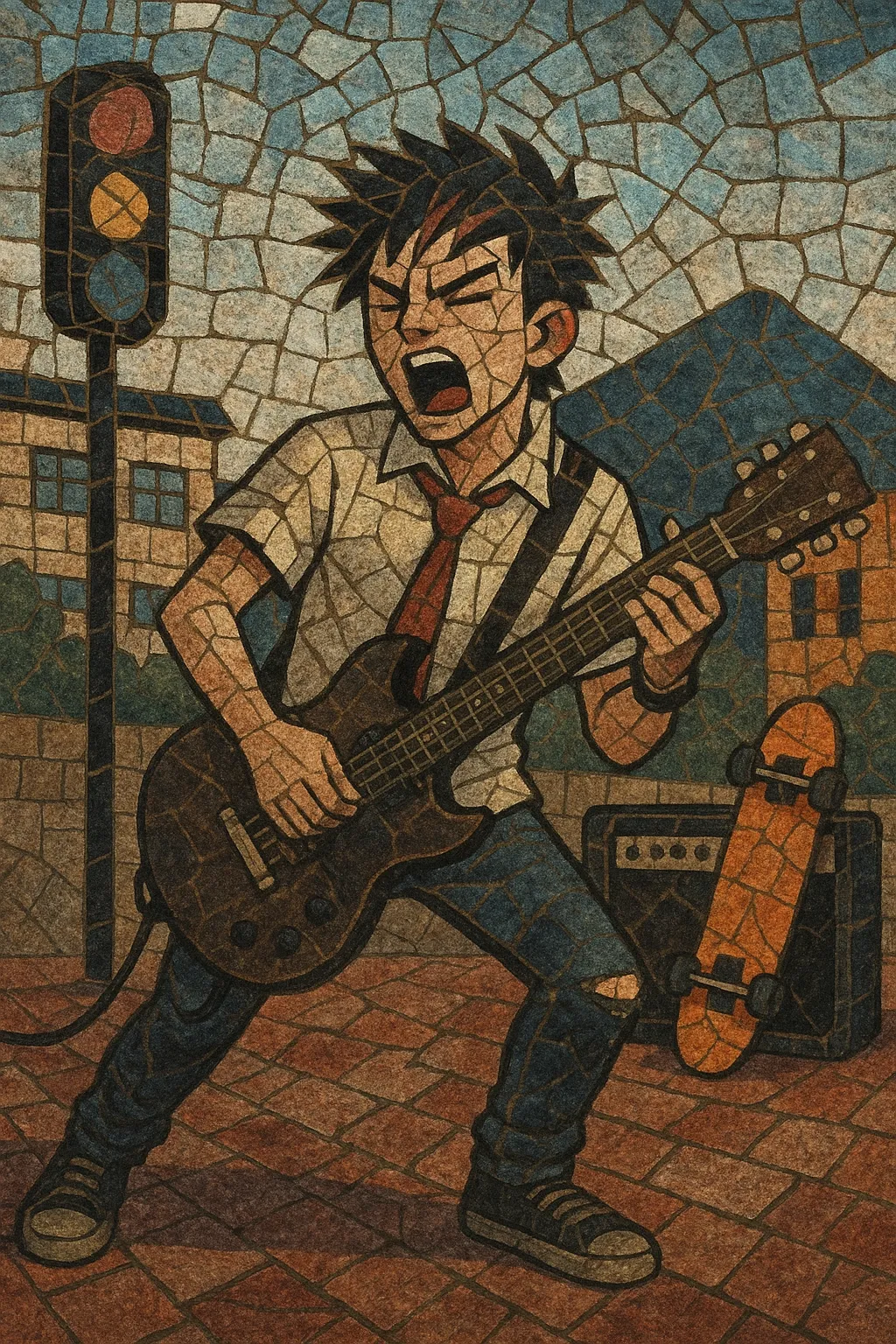Seishun punk (literally “youth punk”) is a Japanese strain of pop-punk and melodic punk rock that foregrounds themes of adolescence, school life, friendship, first love, and small-town growing pains.
Musically it blends fast, straight-ahead punk rhythms with bright, sing-along choruses, catchy guitar leads, and simple, diatonic progressions. Compared with harder punk, it is hook-driven and emotive, favoring major keys, gang vocals, and shout-along refrains that capture the urgency and optimism of youth.
The style emerged from Japan’s late-1990s/early-2000s indie and skate-punk circuits, then gained mainstream visibility through indie labels, festival circuits, and prominent TV/anime tie-ins. Its sound and sentiment helped bridge punk energy with J-rock/J-pop accessibility.
Japanese punk and skate-punk scenes of the late 1990s laid the groundwork for a more melodic, youth-centric direction. Bands honed fast tempos, simple chord cycles, and big hooks while singing in Japanese about everyday teenage concerns. DIY labels, small live houses, and skate culture fostered the community.
Around the early 2000s, media and fans began informally grouping these acts under “seishun punk,” highlighting their lyrical focus on youth (seishun) and their approachable, pop-leaning punk sound. Indie successes turned into chart traction as bands moved from clubs to large festivals, with television and anime placements amplifying their reach.
The style crystallized with a run of high-energy, melody-first releases featuring shout-along choruses, gang vocals, and power-chord riffs. Albums and singles resonated with students and young adults, and the scene’s accessibility drew in listeners beyond traditional punk audiences.
Later waves blended seishun punk hallmarks with J-rock, emo, and alternative rock, keeping the lyrical focus on growing up while expanding production gloss and arrangement variety. Though trends shifted, the template—speed, sincerity, and sing-along catharsis—continued to inform contemporary J-rock and anime-oriented pop-punk aesthetics.
Seishun punk helped normalize Japanese-language pop-punk in the mainstream, influencing how youthful themes are presented across J-rock, J-pop crossovers, and anime soundtracks. Its balance of punk immediacy and pop tunefulness remains a touchstone for newer bands.


